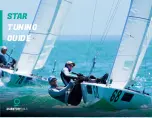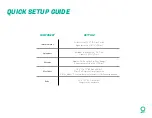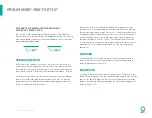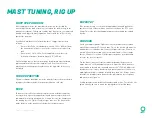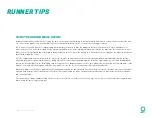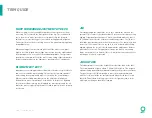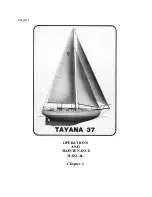
S TA R / T UNIN G GUIDE
JIB LEAD POSITION
After jib sheet tension, the lead position fore and aft is the most important
adjustment. For the fore and aft setting, you should have some fullness in the
foot with the mid batten pointing straight back. If the foot vibrates or flaps, it’s
too tight, and the lead needs to go forward. The lead usually ends up at about
86½” (2200mm) from the headstay, but this will vary depending on the boat and
how high off the deck the jib is set. Start with the jib sheet at a 45˚-50˚ angle off
the deck. The sheet angle will be more vertical, up to 75˚ in light air to make the
sail fuller.
For an inboard/outboard location, the jib cars should be set at 14” (356mm)
from the center line. Unless you are over standing the weather mark or sailing
in puffy conditions over 22 knots (when you would move the lead outboard),
these leads do not need to change from inboard to outboard.
Downwind, the jib halyard should be raised so that the head of the jib is 12”-18”
away from the jib halyard sheave. This allows the boat to have the maximum
sail speed off the wind. Be sure to let the jib halyard back down before you get
to the bottom mark.
JIB TACK DOWNHAUL
Just enough tension to take out the wrinkles is the fastest setting for this
control line. When the breeze decreases, be sure to ease the line, and if you see
wrinkles starting to appear, pull on the line until they disappear.
BACKSTAYS AND JIB RELATIONSHIP
The backstays affect the jib by changing the headstay sag. Pulling on both the
upper and lower backstays will decrease sag and flatten the jib. The mainsheet
will also pull back on the rig and affect the headstay sag. Keep in mind that the
backstay and jib halyard have a symbiotic relationship: When one comes on, the
other should be pulled on; if one is let off, the other should be left off, too.
TRIM GUIDE
Содержание STAR
Страница 1: ...STAR TUNING GUIDE ...

